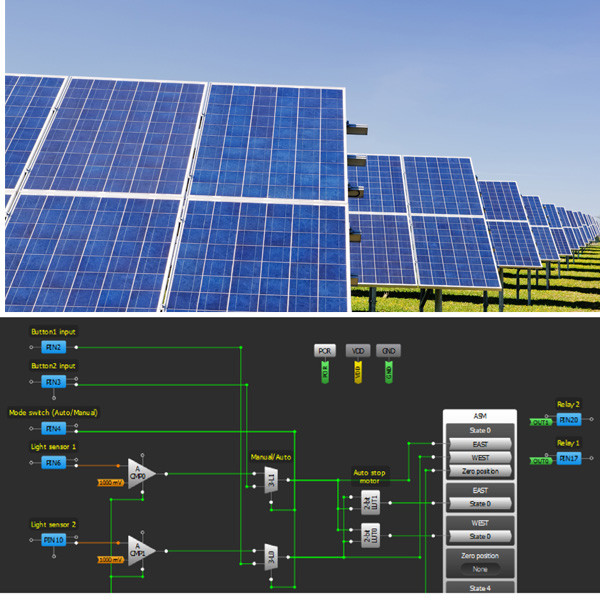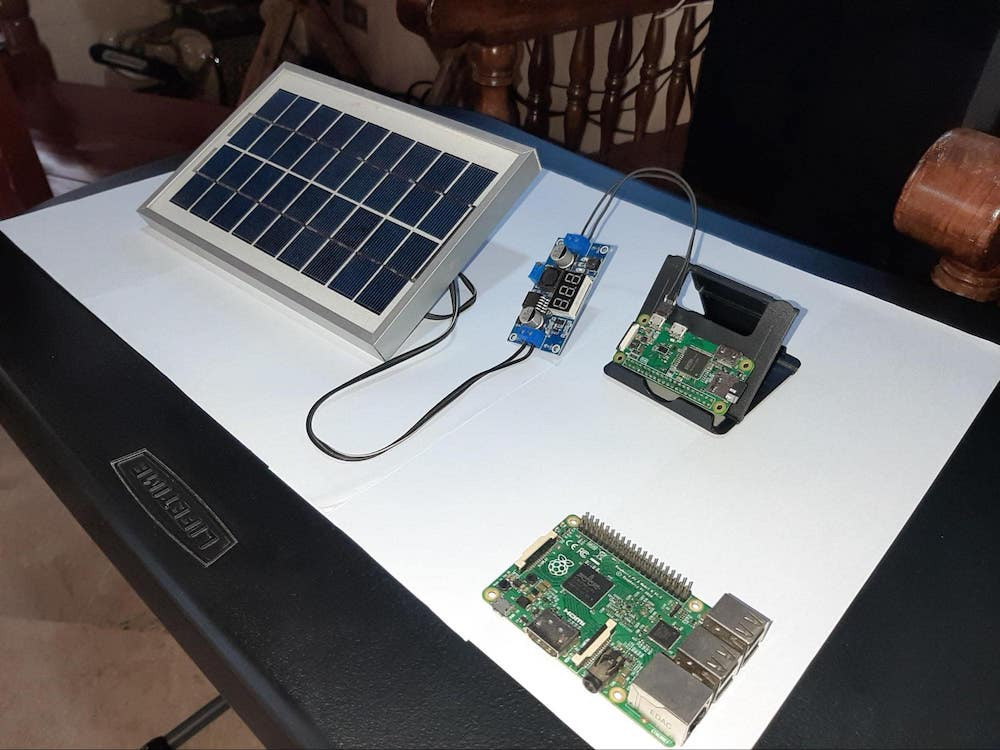Dual Axis Solar Tracker V2.0
https://makerv2.webteractive.co/arduino/projects/dual-axis-solar-tracker-v20
Track the sun in X and Y with this simple Arduino Project
How to Make a Solar Panel Tracking System
https://makerv2.webteractive.co/pic/projects/solar-panel-tracking-system
This solar tracker will keep the panels pointed toward the sun to ensure they always operate at maximum performance.
2-Axis Solar Sun Tracker
https://makerv2.webteractive.co/pcb/projects/2-axis-solar-sun-tracker
This project describes the design of a sun tracking algorithm using
Dialog's GreenPAK IC.
Solar Inverter for Home
https://makerv2.webteractive.co/custom/projects/solar-inverter-for-home
Solar Inverter for Home
DIY - SOLAR BATTERY CHARGER
https://makerv2.webteractive.co/arduino/projects/diy-solar-battery-charger
Wouldn’t it be really cool if you can charge your mobile phones battery using the sun instead of a USB charger.
How Solar Power Cars Work: Exploring Solar Electronics
https://makerv2.webteractive.co/blog/how-solar-power-cars-work-exploring-solar-electronics
The transport sector in Europe remains one of the most significant contributors to greenhouse gases such as CO2 and nitrogen oxides (aka NOx) from the exhaust pipes of vehicles. Thankfully, engineers are working on eco-friendly automotive solutions—and an exciting example of them are solar-powered vehicles.
Advancements in Solar Technologies Help Meet Low-Cost and Sustainable European Energy Goals
https://makerv2.webteractive.co/blog/advancements-in-solar-technologies-help-meet-low-cost-and-sustainable-european-energy-goals
In the race for renewable energy, solar photovoltaic cells are among the first-place contenders. At the same time, they pose considerable challenges in terms of manufacturing costs, efficiency, and scalability.
Could Transparent Solar Panels Mean That Tomorrow’s Windows Will Generate Electricity?
https://makerv2.webteractive.co/blog/could-transparent-solar-panels-mean-that-tomorrows-windows-will-generate-electricity
Solar panels, being opaque due to their semiconductor layers, can traditionally only be mounted on buildings. Recently, however, scientists at Incheon University, South Korea created a transparent version of the energy harnessing technology. Could these see-through solar panels ever be integrated into windows?




